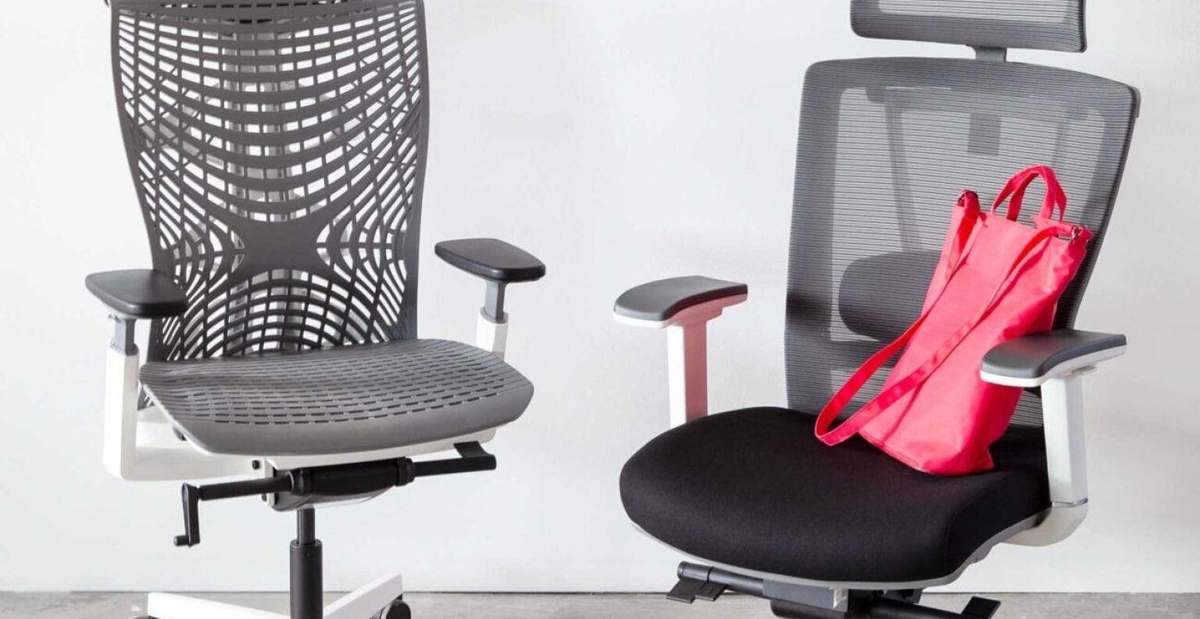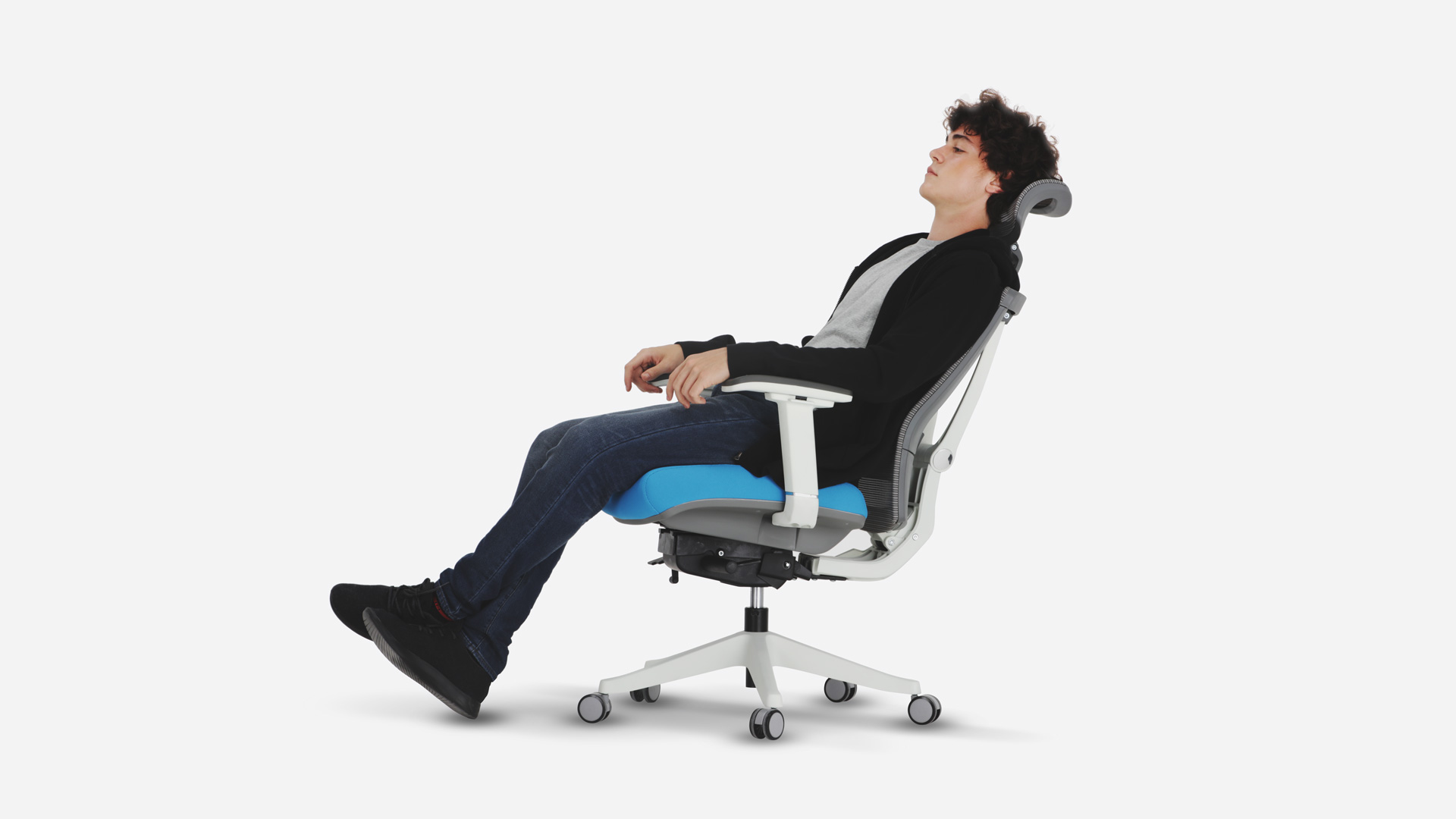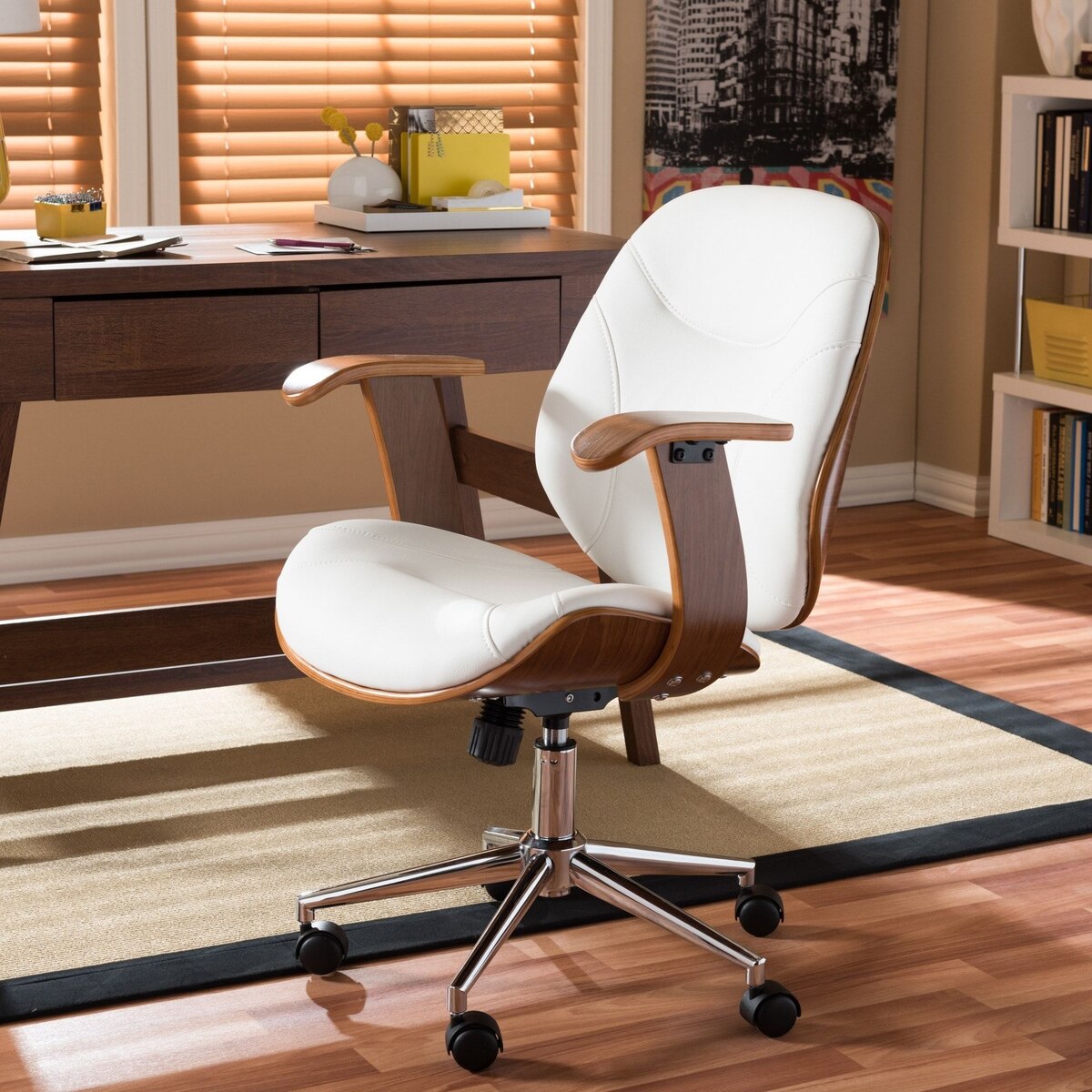Home>Furniture & Design>Office Furniture>How To Fix A Broken Office Chair


Office Furniture
How To Fix A Broken Office Chair
Modified: March 6, 2024
Learn how to easily fix your broken office chair with our step-by-step guide. Get your office furniture back in top shape today!
(Many of the links in this article redirect to a specific reviewed product. Your purchase of these products through affiliate links helps to generate commission for Storables.com, at no extra cost. Learn more)
Introduction
Office chairs are essential for maintaining comfort and productivity in the workplace. However, over time, these chairs may succumb to wear and tear, leading to various issues such as broken casters, damaged seats, or loose screws. Instead of investing in a new chair, you can often save money and reduce waste by repairing your existing one. This guide will walk you through the process of fixing a broken office chair, providing practical tips and step-by-step instructions to restore its functionality and comfort.
Whether your chair is wobbly, creaky, or unsteady, this comprehensive tutorial will empower you to address a wide range of common problems. By understanding the anatomy of your office chair and learning how to assess and repair different components, you can extend the lifespan of your chair and create a more ergonomic and enjoyable workspace.
Let's dive into the world of office chair repair and discover the satisfaction of reviving a beloved piece of furniture. Whether you're a DIY enthusiast or a novice in the realm of furniture maintenance, this guide is designed to equip you with the knowledge and skills needed to tackle chair repairs with confidence. So, roll up your sleeves, gather your tools, and get ready to breathe new life into your trusty office chair.
Key Takeaways:
- Save money and reduce waste by repairing your broken office chair instead of buying a new one. Follow the step-by-step guide to fix issues like wobbly casters, damaged seat, loose screws, and more.
- Learn how to assess and repair common office chair problems, from replacing casters to lubricating moving parts. With attention to detail and regular maintenance, extend the lifespan of your office furniture.
Read more: How To Fix Hydraulics On An Office Chair
Assessing the Damage
Before embarking on the repair process, it’s crucial to thoroughly assess the condition of your office chair. By conducting a comprehensive inspection, you can pinpoint the specific areas that require attention and determine the most effective solutions. Here are some key aspects to consider when assessing the damage:
- Casters: Examine the wheels of the chair to identify any signs of wear, such as cracks or uneven rolling. Test the mobility of the casters on different surfaces to determine if they are functioning smoothly.
- Seat: Inspect the seat for any visible damage, such as tears, dents, or worn-out padding. Sit on the chair to assess its comfort and stability, paying attention to any unusual tilting or shifting.
- Backrest: Check the backrest for structural integrity and stability. Look for any loose or damaged components, and evaluate the overall support and alignment it provides.
- Screws and Joints: Examine all screws, bolts, and joints to identify any looseness or signs of corrosion. Test the stability of the chair by gently rocking and shifting its various parts.
- Moving Parts: Evaluate the functionality of adjustable features, such as the height and tilt mechanisms. Ensure that these components operate smoothly and securely without any resistance or irregular movements.
By conducting a methodical assessment, you can gain a clear understanding of the chair’s condition and prioritize the necessary repairs. This initial step will guide you in formulating a targeted plan of action, allowing you to address each issue with precision and efficiency. Additionally, it will help you determine if any specialized tools or replacement parts are required for the repair process.
Once you’ve identified the specific areas of damage and assessed the extent of the issues, you’ll be ready to proceed with the tailored repairs that will breathe new life into your office chair.
Replacing the Casters
Broken or malfunctioning casters can significantly impede the mobility and stability of an office chair. If you notice that the wheels are damaged, unevenly worn, or failing to roll smoothly, it’s time to replace them to restore the chair’s maneuverability. Here’s a step-by-step guide to replacing the casters:
- Assess the Type of Casters: Before purchasing replacement casters, determine the specific type and size that are compatible with your chair. Consider factors such as the wheel material (e.g., rubber, plastic, or polyurethane) and the appropriate weight capacity for your chair.
- Prepare the Chair: Flip the chair upside down to access the existing casters. If the casters are attached with a stem, use a wrench to carefully remove them from the base of the chair. For casters with a grip ring or a plate, detach them according to the manufacturer’s instructions.
- Install the New Casters: Insert the stem of the new casters into the designated slots on the chair’s base. If the replacement casters feature a grip ring or plate, follow the provided guidelines to secure them firmly in place. Ensure that each caster is securely attached and aligned with the corresponding slots.
- Test the Mobility: Once the new casters are installed, flip the chair upright and test its mobility on different surfaces. Roll the chair back and forth to confirm that the new casters move smoothly and evenly. Ensure that they provide stable support and do not wobble or produce excessive noise.
By replacing damaged or worn-out casters, you can enhance the functionality and maneuverability of your office chair, allowing for effortless movement and positioning within your workspace. Additionally, investing in high-quality replacement casters can contribute to the long-term durability and performance of your chair.
With the casters successfully replaced, you can proceed to address other areas of concern, such as repairing the seat, fixing the backrest, and tightening any loose screws or joints. Each step brings you closer to revitalizing your office chair and creating a more comfortable and efficient work environment.
Repairing the Seat
The seat of an office chair is subjected to constant use, making it susceptible to wear and tear over time. Whether your chair’s seat is plagued by visible damage, such as tears or worn-out padding, or it has lost its supportive firmness, addressing these issues is essential for restoring comfort and functionality. Here’s a comprehensive guide to repairing the seat of your office chair:
- Assess the Damage: Thoroughly inspect the seat for any visible tears, rips, or indentations. Evaluate the condition of the padding to determine if it has become compressed or uneven. Additionally, consider the upholstery material and its overall integrity.
- Replace the Upholstery: If the seat’s upholstery is significantly damaged, consider replacing it with a new piece of fabric or leather. Carefully remove the existing upholstery and use it as a template to cut out a suitable replacement. Secure the new upholstery to the seat using a staple gun, ensuring a smooth and taut finish.
- Restore the Padding: If the seat’s padding has lost its firmness or developed uneven areas, consider adding supplementary cushioning to rejuvenate its support. Utilize foam padding or cushion inserts to enhance the seat’s comfort and resilience, addressing any areas that have become worn or flattened over time.
- Reinforce the Seat Base: Inspect the base of the seat to ensure that it is structurally sound and free from any damage or instability. Tighten any loose screws or bolts that secure the seat to the chair’s frame, ensuring a stable and secure connection.
By addressing the condition of the seat, you can revitalize the comfort and functionality of your office chair, creating a more supportive and ergonomic seating experience. Whether you opt to replace the upholstery, restore the padding, or reinforce the seat base, these targeted repairs will contribute to the overall durability and appeal of your chair.
With the seat successfully repaired, you can move on to addressing other areas of concern, such as fixing the backrest, tightening loose screws, and lubricating moving parts. Each step brings you closer to transforming your office chair into a reliable and comfortable workspace essential.
If the office chair is wobbly or uneven, try tightening all the screws and bolts. If the seat cushion is torn, consider using a seat cover or getting it reupholstered.
Fixing the Backrest
The backrest of an office chair plays a pivotal role in providing support and comfort during extended periods of sitting. If you notice that the backrest is loose, misaligned, or exhibiting signs of damage, it’s essential to address these issues to maintain a healthy posture and ergonomic seating experience. Here’s a comprehensive guide to fixing the backrest of your office chair:
- Assess the Backrest: Carefully examine the backrest to identify any visible damage, such as cracks, tears, or structural issues. Test the stability and alignment of the backrest to determine if it provides adequate support during use.
- Secure Loose Components: If the backrest is wobbly or unstable, identify the source of the looseness. Inspect the screws, bolts, or adjustment mechanisms that connect the backrest to the chair’s frame, and tighten them as needed to restore stability.
- Repair Tears or Damage: If the upholstery or padding of the backrest is damaged, consider repairing or replacing these components. Use a suitable upholstery repair kit to mend tears, or replace the upholstery entirely if the damage is extensive.
- Realign the Backrest: If the backrest is misaligned or tilted at an uncomfortable angle, adjust the position according to your preferred ergonomic settings. Utilize any available adjustment mechanisms to customize the backrest’s position and angle to suit your seating preferences.
By addressing the condition of the backrest, you can enhance the overall comfort and support provided by your office chair, promoting a healthier and more ergonomic seating experience. Whether you focus on securing loose components, repairing damage, or realigning the backrest, these targeted repairs will contribute to the chair’s long-term durability and user satisfaction.
With the backrest successfully fixed, you can proceed to address other areas of concern, such as tightening loose screws, lubricating moving parts, and ensuring that all components are functioning optimally. Each step brings you closer to optimizing the performance and comfort of your office chair, creating an inviting and productive workspace essential.
Read more: How To Fix An Office Chair Armrest
Tightening Loose Screws
Over time, the constant use of an office chair can lead to the gradual loosening of screws and bolts, compromising its stability and structural integrity. Addressing loose screws is crucial for maintaining the chair’s overall functionality and safety. Here’s a comprehensive guide to tightening loose screws on your office chair:
- Identify Loose Components: Conduct a thorough inspection of the chair to identify any loose screws, bolts, or fasteners. Pay close attention to areas where different components connect, such as the seat, backrest, armrests, and base.
- Gather the Necessary Tools: Prepare a suitable screwdriver or wrench that matches the size and type of the loose screws. Additionally, consider using thread-locking adhesive to secure the fasteners and prevent them from loosening again in the future.
- Tighten the Screws: Carefully tighten each loose screw or bolt, ensuring that they are securely fastened without over-tightening, which could potentially damage the chair’s components. Use a systematic approach to work through all the identified loose screws, addressing each one methodically.
- Apply Thread-Locking Adhesive: For added security, consider applying a small amount of thread-locking adhesive to the threads of the screws before tightening them. This adhesive will help prevent the screws from loosening due to vibration or regular use.
- Test the Chair’s Stability: Once all the loose screws have been tightened, test the chair’s stability by gently rocking and shifting its various components. Ensure that the fasteners provide a secure connection, and that the chair feels steady and free from wobbling or creaking sounds.
By systematically tightening loose screws and fasteners, you can restore the stability and structural integrity of your office chair, creating a safer and more reliable seating experience. Additionally, the application of thread-locking adhesive can help prevent future loosening, prolonging the effectiveness of the repairs.
With the loose screws successfully tightened, you can proceed to address other areas of concern, such as lubricating moving parts, ensuring the smooth operation of adjustable features, and conducting a final assessment of the chair’s overall stability. Each step brings you closer to optimizing the performance and longevity of your office chair, ensuring a comfortable and secure workspace essential.
Lubricating Moving Parts
Smooth and effortless movement is essential for the optimal functionality of an office chair. Over time, the moving parts and mechanisms of the chair may become prone to friction and stiffness, hindering their performance and comfort. By lubricating these components, you can restore the chair’s smooth operation and prolong its longevity. Here’s a comprehensive guide to lubricating the moving parts of your office chair:
- Identify Moving Components: Determine the specific moving parts and mechanisms of the chair that may benefit from lubrication. This may include the casters, swivel mechanism, tilt mechanism, and any adjustable features such as seat height and armrest adjustments.
- Select the Appropriate Lubricant: Choose a high-quality lubricant suitable for the materials and mechanisms of the chair. Consider using a silicone-based spray lubricant or a dry lubricant that will effectively reduce friction without attracting dust or debris.
- Apply the Lubricant: Carefully apply the lubricant to the designated moving parts, ensuring thorough coverage while avoiding excessive saturation. Focus on the joints, pivot points, and areas where metal components interact to facilitate smooth movement.
- Operate the Chair: After applying the lubricant, test the chair’s various mechanisms and moving parts to distribute the lubricant evenly and promote smooth operation. Engage the swivel, tilt, and height adjustment features to confirm that they move effortlessly and without resistance.
- Wipe Excess Lubricant: If any excess lubricant is present, use a clean cloth to wipe it away, ensuring that the chair’s surfaces remain clean and free from residue. This step will prevent the accumulation of dust and maintain the chair’s appearance.
By lubricating the moving parts of your office chair, you can enhance its overall functionality and user experience, ensuring that it operates smoothly and efficiently. Additionally, regular lubrication can help prevent premature wear and prolong the lifespan of the chair’s components.
With the moving parts successfully lubricated, you can proceed to conduct a final assessment of the chair’s overall performance, ensuring that all components are functioning optimally and contributing to a comfortable and productive workspace. Each step brings you closer to revitalizing your office chair and creating an inviting and ergonomic seating essential.
Conclusion
Repairing a broken office chair not only saves money and reduces waste but also allows you to breathe new life into a valuable piece of furniture. By following the comprehensive guide provided in this article, you have gained the knowledge and skills needed to address a wide range of common issues that may afflict your office chair. From replacing damaged casters to lubricating moving parts, each step in the repair process contributes to the chair’s longevity and your comfort in the workplace.
Through a methodical approach, you have learned to assess the damage, identify specific areas of concern, and execute targeted repairs to restore the functionality and stability of your office chair. Whether it’s tightening loose screws, repairing the seat, or fixing the backrest, each repair contributes to the chair’s overall performance and your satisfaction as a user.
As you embark on the journey of repairing your office chair, remember that attention to detail and regular maintenance can significantly extend the lifespan of your furniture. By understanding the anatomy of your chair and investing time and effort in its upkeep, you can create a comfortable and ergonomic workspace that supports your productivity and well-being.
Furthermore, the act of repairing and maintaining your office chair aligns with sustainable practices, reducing the environmental impact of unnecessary furniture disposal and contributing to a more eco-friendly approach to workspace management.
Armed with the knowledge and confidence gained from this guide, you are well-equipped to tackle future chair repairs and ensure that your office furniture remains a reliable and cherished asset. With each repair completed, you contribute to a more sustainable and efficient work environment, all while enjoying the comfort and functionality of a well-maintained office chair.
So, roll up your sleeves, gather your tools, and embark on the gratifying journey of repairing and revitalizing your office chair. Your efforts will not only enhance the chair’s performance but also contribute to a more comfortable and sustainable workspace for years to come.
Frequently Asked Questions about How To Fix A Broken Office Chair
Was this page helpful?
At Storables.com, we guarantee accurate and reliable information. Our content, validated by Expert Board Contributors, is crafted following stringent Editorial Policies. We're committed to providing you with well-researched, expert-backed insights for all your informational needs.















0 thoughts on “How To Fix A Broken Office Chair”